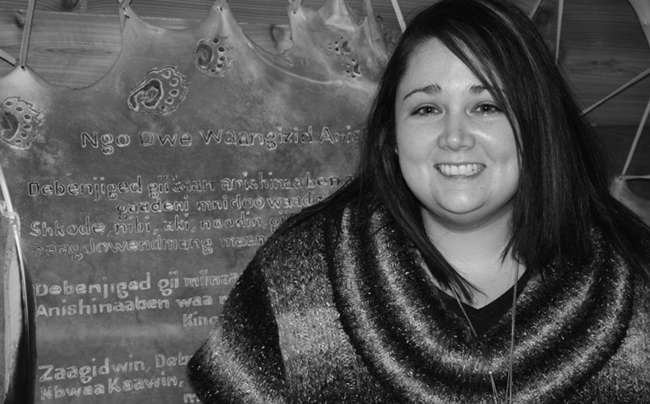Opinion – Anishinabek system ‘healthier’ approach

By Kelly Crawford
The establishment and implementation of the Anishinabek Education System will support First Nation student success, First Nation jurisdiction and ensure strong Anishinaabe students for generations to come.
Anishinabek Nation leaders have resolved to fight any further attempts by Canada to impose external education systems and standards on their students. The Anishinabek Education System, the subject of negotiation for the past 18 years, is the preferred Anishinabek approach to the principle of First Nations control of First Nations education.
As former Ontario Regional Chief Angus Toulouse told the Standing Senate Committee on Aboriginal Peoples in 2010: “First Nations education is in crisis. In some First Nations communities a staggering seven out of ten First Nations students will not graduate from high school this year. In far too many others, countless First Nations children will never attend a school equipped with libraries, science and technology labs or athletic facilities. And incredibly, in a country as rich as ours, some First Nations children will never set foot in a proper school.”
Is the development of the Anishinabek Education System a solution to the shocking education reality for many First Nation students? One of the key questions that resonate with most people on any subject is “How will this affect me?” In this case, how will the implementation of the Anishinabek Education System affect me?
We can recognize from a student perspective the tremendous benefits that will come from Anishinaabe education but how will this affect First Nation communities? In the words of Anishinaabe Elder Art Solomon: “To heal a nation, we must first heal the individuals, the families and the communities.” The implementation of the Anishinabek Education System will facilitate the healing of the Anishinabek Nation. This can be looked at as individual healing, by way of a holistic approach, and with a global perspective.
In pre-contact times, learning came through teachings focused on traditional values such as humility, honesty, courage, kindness and respect. First Nations scholar Verna Kirkness says traditional education was strongly linked to the survival of the family and the community. This tells us that traditional education through teachings focusing on traditional values will lead to healthier communities.
The decolonization and revitalization of educational environments for First Nations students is essential to their lifelong success. Curricula and teaching methods will be developed and approved by the Anishinabek for the Anishinabek. Anishinabek students should not be deprived of learning their language, history, values, and worldview. Anishinabek First Nation schools can promote and foster cultural identity and pride among Anishinabek students, which in turn results in self-esteem and self-confidence. Students will flourish in a student-centered system that looks at learners from a holistic perspective. With a strong foundation, Anishinabek students will achieve more success in education at all levels.
The Anishinabek Education System can provide culturally- appropriate education for Anishinaabe students and close the persistent educational achievement gap while healing a nation.
**Your opinion matters! Register to take our education survey today! http://portal.anishinabek.ca/public/

